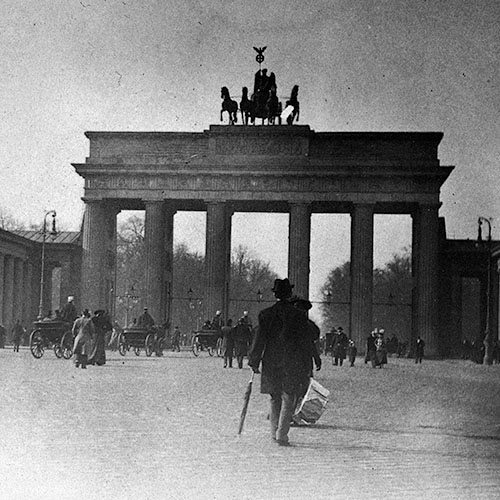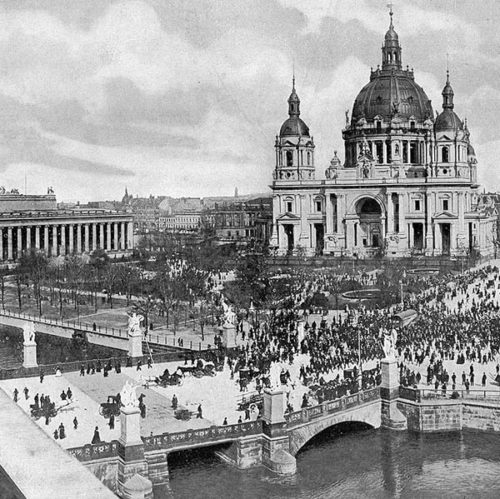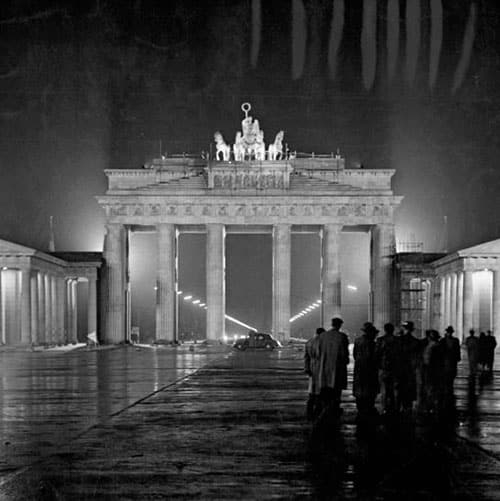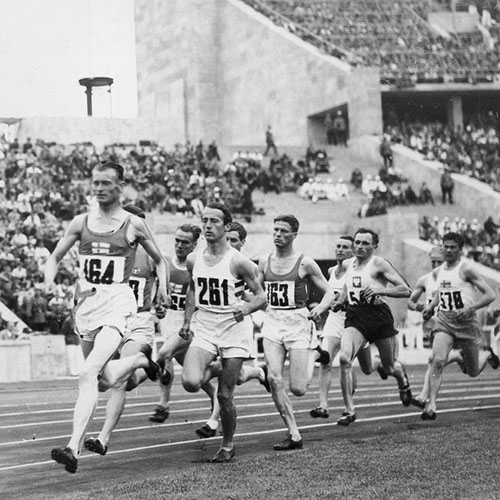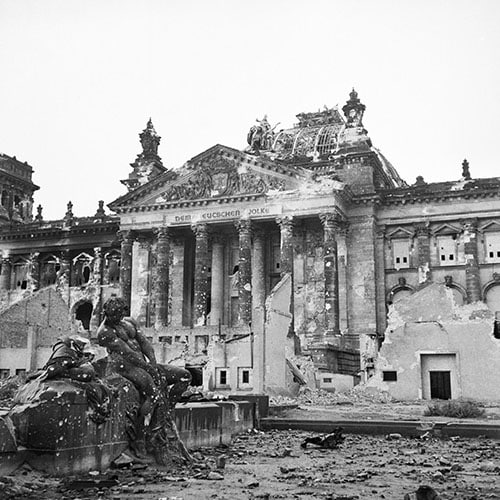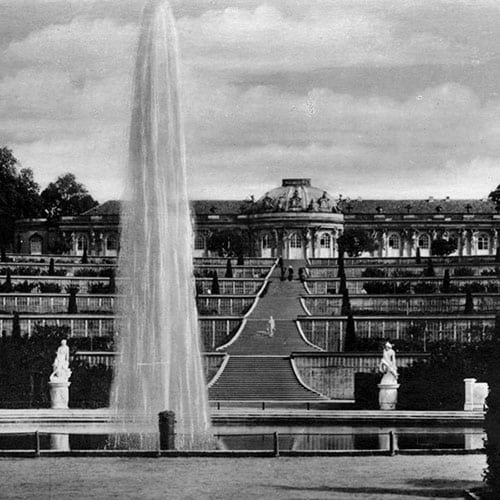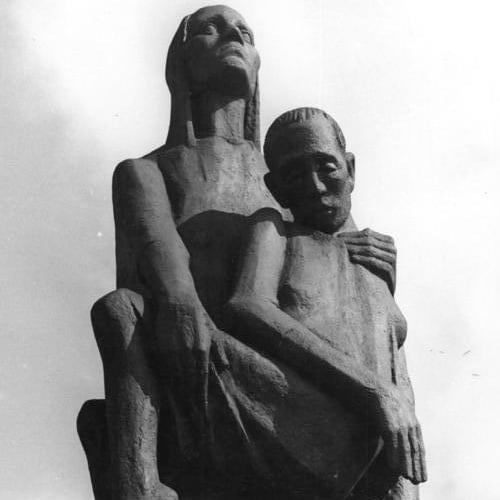“[T]his story has to be told and retold to honor those who were victims. Their heroic deeds should not be lost in history but must be irremovably secured in it”
Edzard Ernst MD, PhD, Emeritus Professor, Exeter University
War expedites many things. First and foremost, the premature arrival of death. In many instances not only premature, but randomly assigned.
Of all the things that make the Second World War exceptional, that many of those deaths would be scripted, ordered directly from above, and directly named, stands out. The genocides carried out by the Nazi regime were bureaucratic exercises in documentation – birthing the term ‘Desktop Murderers’ (Schreibtischtäter).
To that describable mass, we must also include those individuals who were chosen and subjected to medical experimentation. Thousands of prisoners and patients, whose only destination was death, used as test subjects in what were often bizarre and highly suspect practices.
–

National Socialism - The Rise of Modern Medicine & Medical Language
“Medicine is a social science, and politics is nothing else but medicine on a large scale.”
Rudolf Virchow (1821-1902), often called the “Father of Modern Pathology”
The German medical profession of the 1800s was a landscape populated by giants: Rudolf Virchow, the father of modern pathology; Robert Koch, who identified the agents of tuberculosis and cholera; Paul Ehrlich, the pioneer of chemotherapy. German universities were magnets for the brightest minds, their laboratories crucibles of innovation. Medicine was a source of immense national pride, a symbol of German intellect and its contribution to human progress.
For instance, more than half of all German Nobel Prize winners in Physiology or Medicine worked at Berlin’s Charite hospital.
But this noble edifice was built on foundations that proved unnervingly susceptible to corruption. The language of late 19th and early 20th-century medicine was one of public health, of hygiene, and of the collective well-being of the population.
It was a short, horrifying journey from nurturing the health of a nation to purging it of “impurities.”
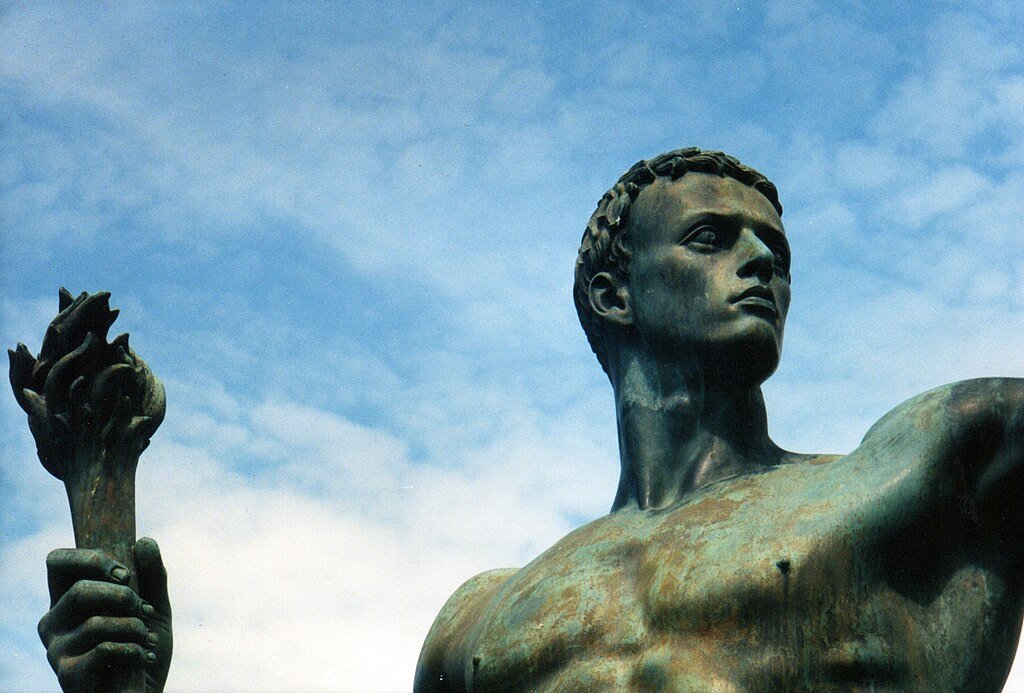
The National Socialist ideology, with its obsessive focus on racial purity and the mystical concept of the Volkskörper—the ‘people’s body’—found a fertile ground in this medicalised worldview. The Nazi regime brilliantly and perversely co-opted this language.
The state, not the individual, was the primary patient. Political and social problems were reframed as biological threats.
The Jewish people were no longer simply a different religious or ethnic group; they were, in the words of Nazi propaganda, a “gangrenous appendix,” a “cancer” gnawing at the healthy flesh of the Aryan race.
People with disabilities, both mental and physical, were deemed ‘Lebensunwertes Leben’ (‘life unworthy of life’), a genetic and economic burden on the productive national body.

The Hippocratic Oath, with its sacred duty to the individual patient, was swept aside by a new, brutal imperative: the biological destiny of the Master Race.
This wasn’t just rhetoric; it was state policy, meticulously planned and executed.
It was from the field of German medicine – which boasted of the highest voluntary membership of the Nazi Party of any profession in the country – that many of the men and women who would facilitate the mass murder of millions came. Where the methods implemented across occupied Europe for disposing of those unwelcome in the ‘Volksgemeinschaft’ were developed.
The direct predecessors to the six Nazi extermination camps (Vernichtungslager) – Chełmno, Belzec, Sobibor, Treblinka, Majdanek and Auschwitz – were the six main killing centres of the T4 programme – Grafeneck, Brandenburg, Bernburg, Hartheim, Sonnenstein, and Hadamar.
Medical murder would serve as the precursor to industrialised mass murder.
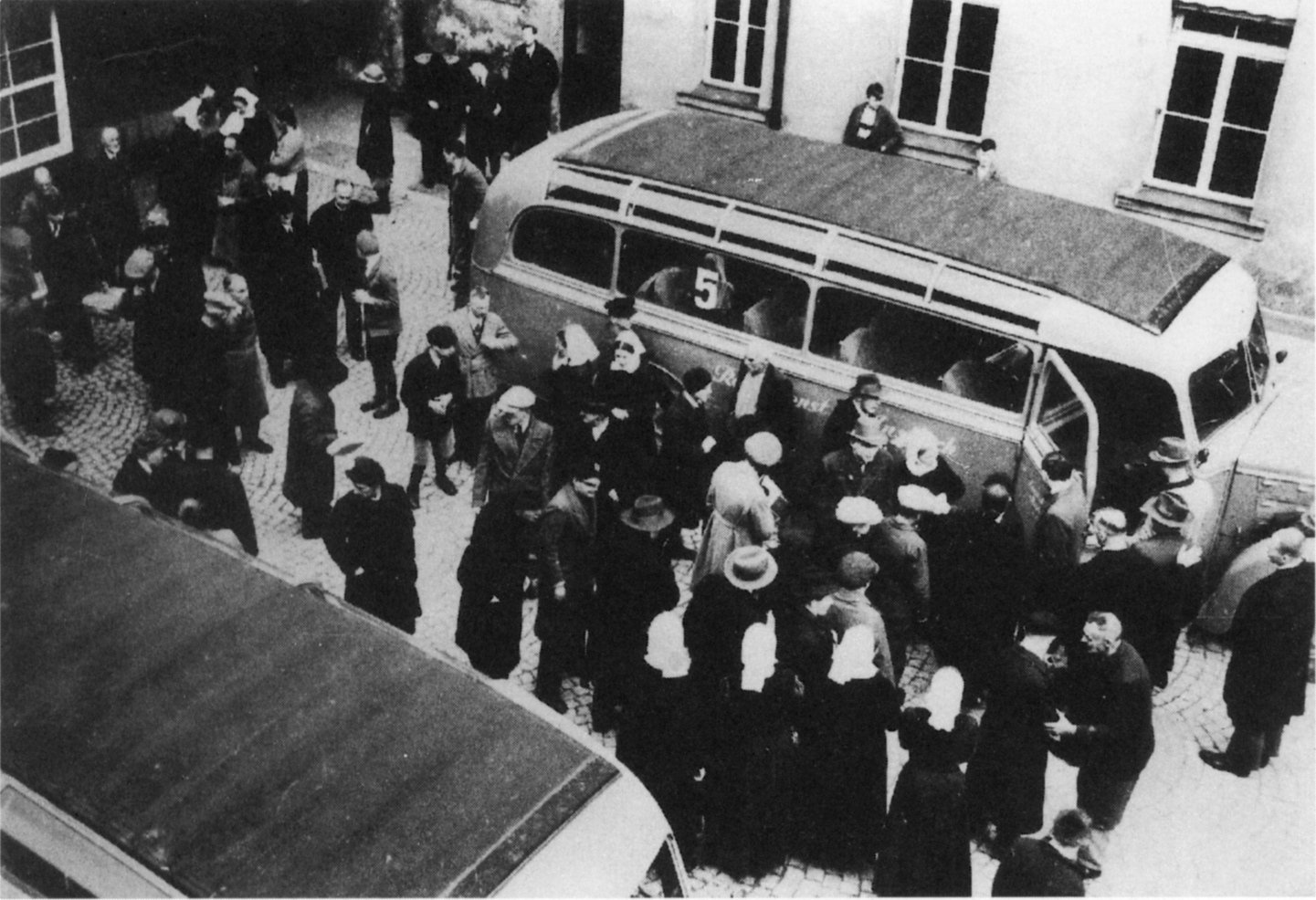
Overseen from a nondescript villa at Tiergartenstrasse 4 in Berlin, the so-called ‘T4 Programme’ was the systematic, secret murder of an estimated 300,000 individuals targeted as being worthy of a merciful death (‘Gnadentod’). Spearheaded by doctors like Karl Brandt, Hitler’s personal physician, and Philipp Bouhler, it was presented as a compassionate, ‘euthanasia’ program to relieve suffering. In reality, it was a cold-blooded campaign of economic and eugenic cleansing.
Doctors, nurses, and caregivers across the Reich were instructed to report on patients who were incurable or unproductive. These reports were then reviewed by a panel of T4 doctors who, often without ever seeing the patients, would mark a form with a red ‘plus’ for death or a blue ‘minus’ for life. Those marked with the red plus were transported to one of the six killing centres.
There, in facilities disguised as sanatoriums, they were led into rooms designed to look like showers and murdered with carbon monoxide gas – others receiving lethal injections, many also asphixiated in purposely constructed ‘gas vans’ with sealed rear compartments.

Aktion T4 was the Nazi regime’s medical dress rehearsal for the Holocaust.
It was here that the process of mass gassing was perfected. It was here that a bureaucracy of murder was established, complete with falsified death certificates and condolence letters sent to grieving, deceived families.
And, most terrifyingly, it was here that an entire generation of medical professionals was morally anaesthetised, taught to see killing not as a violation of their oath, but as a form of ‘healing’ for the larger Volkskörper.
Their victims – where they served any purpose at all – simply fodder in a greater struggle.
–
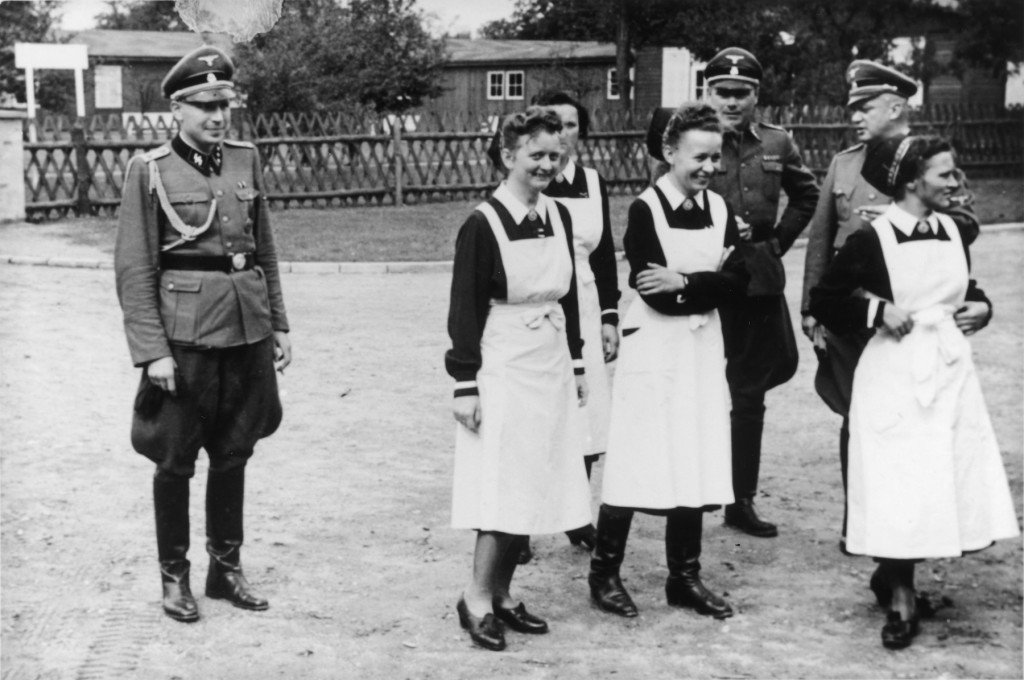
The Nazi Medical Experiments
“The participation in the ‘betrayal of Hippocrates’ had a broad basis within the German medical profession. Without the doctors’ active help, the Holocaust could not have happened.”
E Ernst – author of ‘The Third Reich – German Physicians Between Resistance and Participation’ (2001)
The medical experiments conducted in the Nazi camps and facilities were the ultimate expression of this depraved ideology.
Here, human beings, stripped of their names, their rights, and their dignity, were reduced to mere biological material, their bodies nothing more than a resource for the Nazi state. The sheer variety and sadism of the experiments are staggering, a catalogue of horrors driven by a mix of military necessity, ideological fanaticism, and grotesque scientific curiosity.
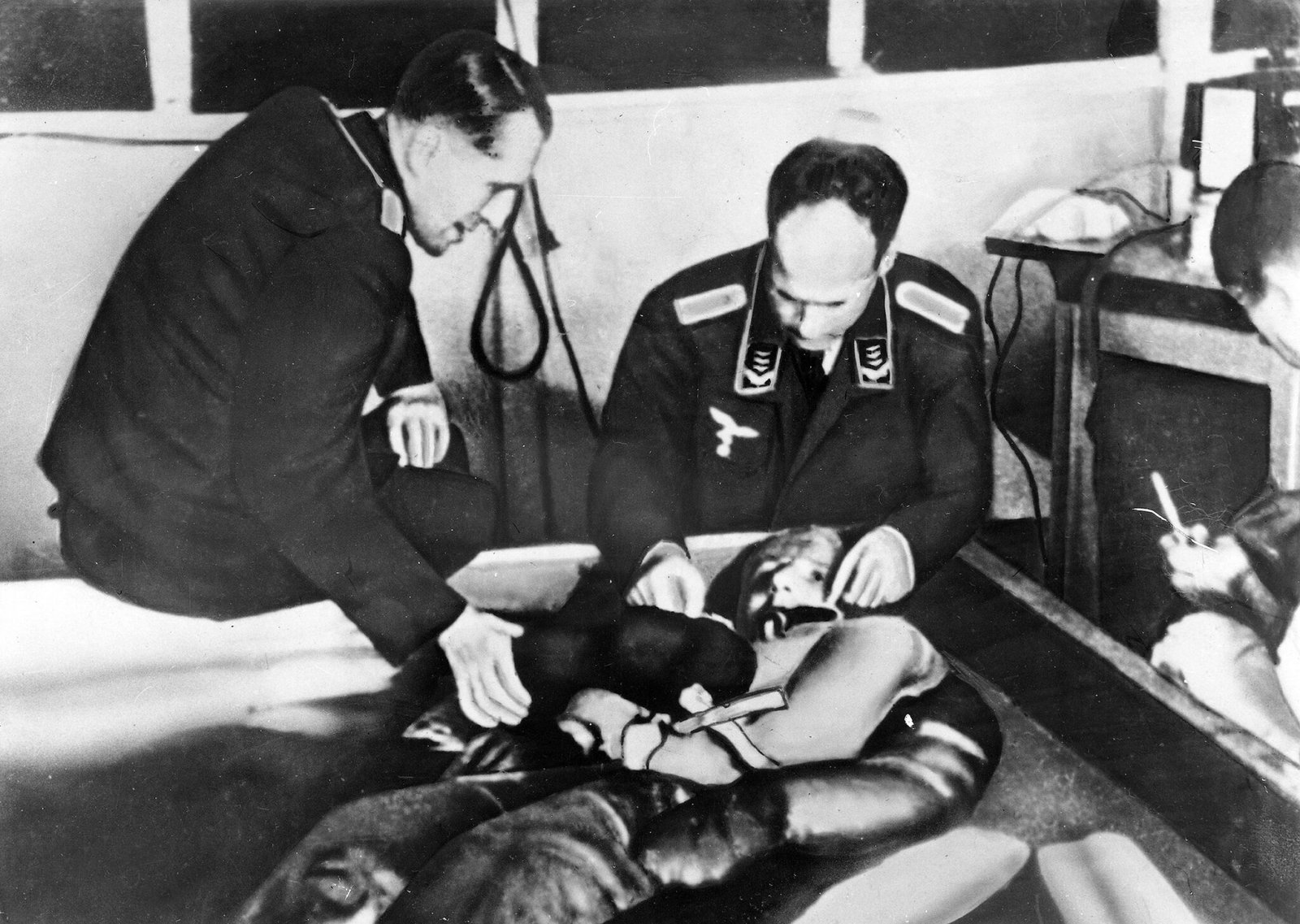
At the Dachau concentration camp, SS doctor Sigmund Rascher conducted a series of infamous hypothermia experiments. Ostensibly, the goal was to find better ways to treat German Luftwaffe pilots who had been shot down over the frigid North Sea. To simulate these conditions, prisoners were either forced into vats of ice water or strapped naked to stretchers and left outside in the freezing Bavarian winters.
Witnesses at the later Nuremberg Doctors’ Trial gave harrowing testimony. They described prisoners thrashing and screaming in the icy water, their pleas echoing through the barracks. Rascher and his assistants meticulously recorded the decline: the drop in core body temperature, the fibrillation of the heart, the eventual loss of consciousness and death. Some men were recorded as crying out for their mothers in their final, delirious moments. Rascher’s reports to Heinrich Himmler were chillingly dispassionate, noting that death usually occurred once the body temperature dropped below 28°C (82.4°F).
The “research” didn’t end with death. Equally horrific were the attempts at rewarming the frozen, often still-living, victims. They were subjected to boiling hot water baths which caused massive shock and excruciating pain. In one particularly perverse series, Rascher investigated “animal warmth,” forcing four Romani women to strip and attempt to sexually stimulate a frozen prisoner with their bodies.
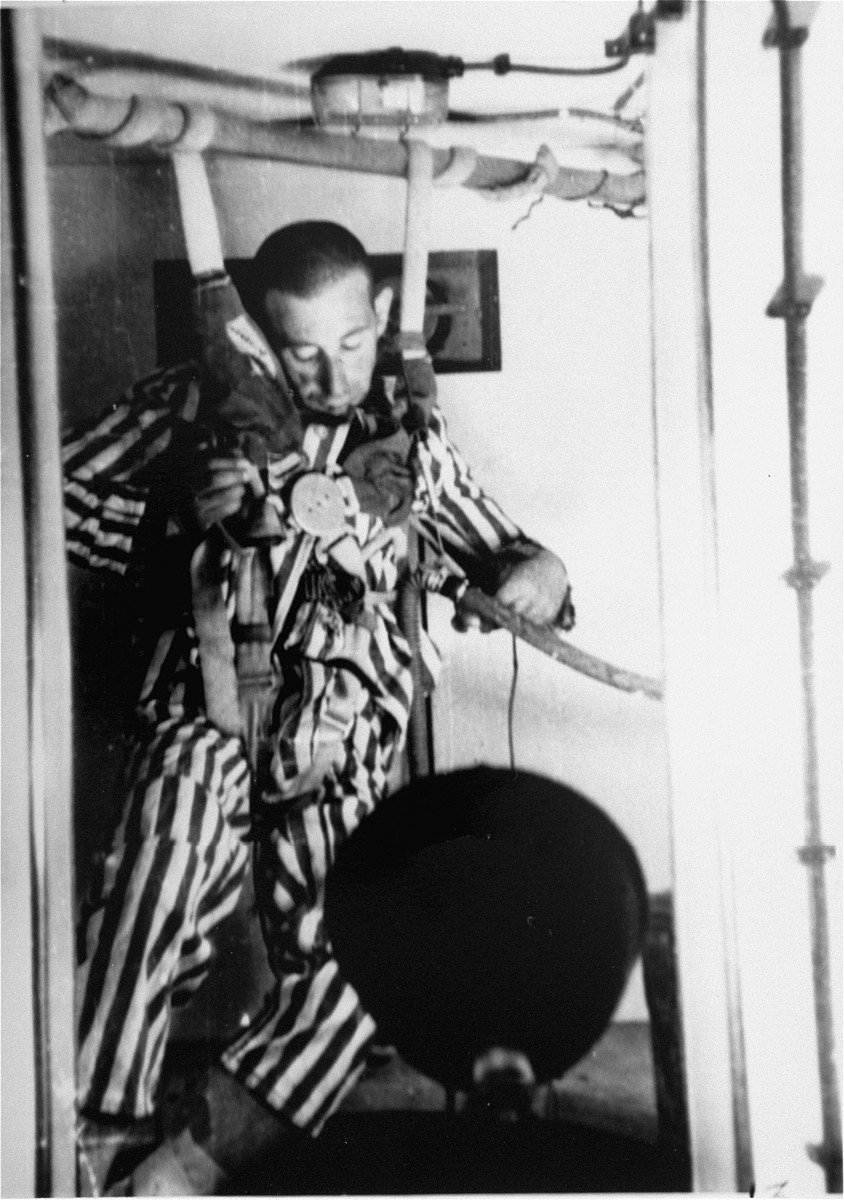
Rascher’s “work” also included high-altitude experiments, designed to help pilots survive ejection at extreme heights. For this, a mobile low-pressure chamber was brought to Dachau. Prisoners were locked inside while technicians simulated the thin air and lack of oxygen found at altitudes of up to 68,000 feet.
The effect on the human body was catastrophic. As the pressure dropped, the oxygen in the victims’ blood boiled, causing severe embolisms. They would writhe in agony, gasping for air, foaming at the mouth, and contorting in violent convulsions as their lungs hemorrhaged and their brains swelled.
Dr. Leo Alexander, an American medical consultant at the Nuremberg Trials, described Rascher’s own notes, which detailed live vivisections on victims who had survived the initial trauma.
Rascher would cut open their skulls while they were still conscious to observe the effects of air embolism on the blood vessels of the brain. His scientific detachment in the face of such suffering remains one of the most chilling aspects of the entire affair.
It is possible to find parallels with the wickedness of Rascher’s professional conduct in the scandalous and repugnant personal life of the Nazi doctor and his wife. The couple were touted by the SS finding ways to extend female childbearing age – as Rascher’s wife, Karoline, had given birth to three children even after reaching 48 years of age. Or so it seemed.
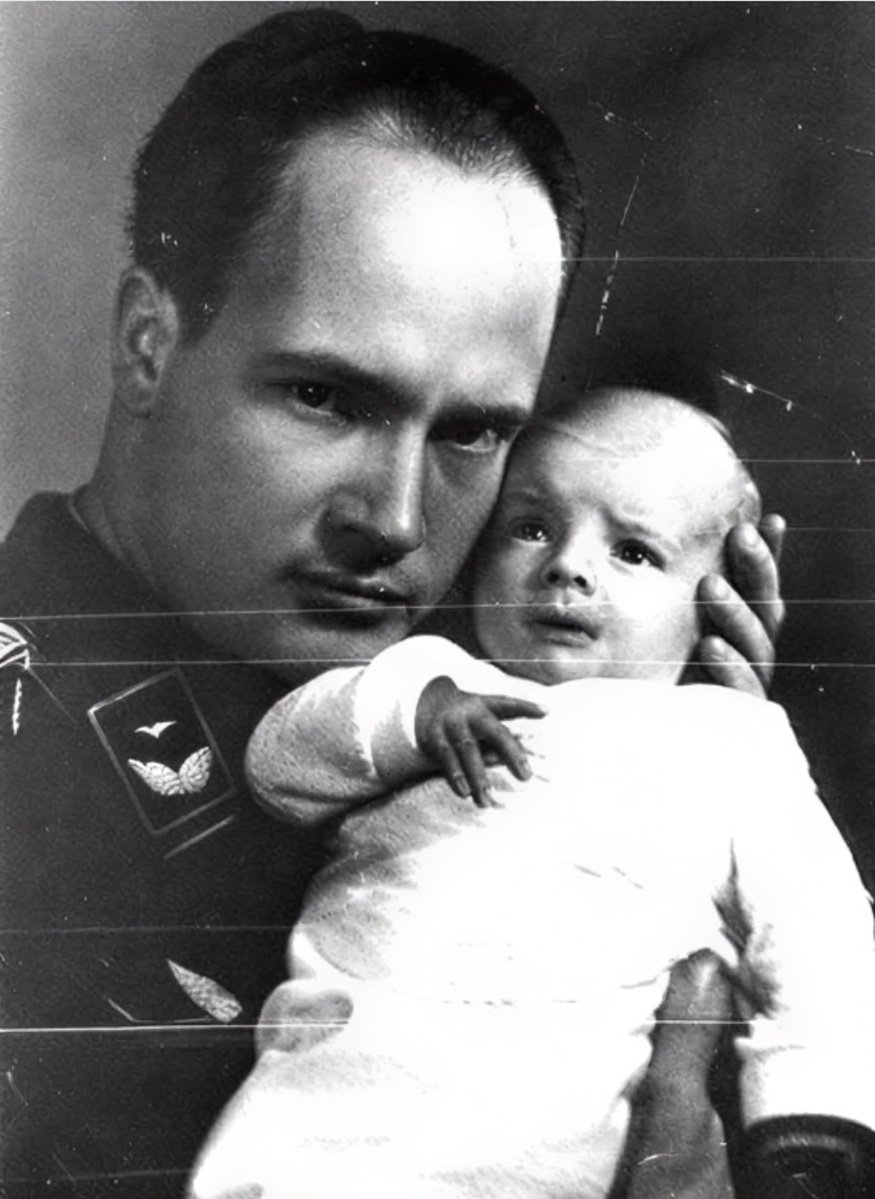
When it was discoverd on the arrival of her fourth child that the couple had either kidnapped or bought their children, Rascher was sent to Buchenwald concentration camp as a prisoner, without trial. His wife similarly sent to Ravensbrück.
Neither would survive the war to face responsiblity for their crimes and be confronted by their surviving victims – both Sigmund Rascher and Karoline having been executed by the SS in April 1945.

No figure embodies the depravity of Nazi medicine more than Dr. Josef Mengele, the “Angel of Death” at Auschwitz. Mengele would stand on the selection ramp, whistling opera as he condemned hundreds of thousands to the gas chambers with a flick of his riding crop. But his real passion was ‘research’.
Mengele was obsessed with genetics and the supposed biological markers of race. He established a grotesque human laboratory focusing on twins, dwarfs, and individuals with physical abnormalities. Twins were especially prized.
He would subject them to hours of excruciatingly detailed measurements and examinations. Then the real experiments would begin. He injected diseases like typhus and tuberculosis into one twin and not the other to have a ‘control’ for his studies. He would drip chemicals into children’s eyes in an attempt to change their colour to Aryan blue, causing severe pain and blindness.
When his experiments were concluded, or if one twin died from disease, his protocol was simple and unvarying: the other twin would be murdered immediately with a direct injection of phenol to the heart. Few survived to tell the tale.
This allowed Mengele to perform comparative autopsies, searching for the genetic secrets he believed would unlock the key to Nazi racial supremacy.
His work produced no scientifically valid conclusions; it was the manifestation of a murderous obsession, science as a tool for sadism.
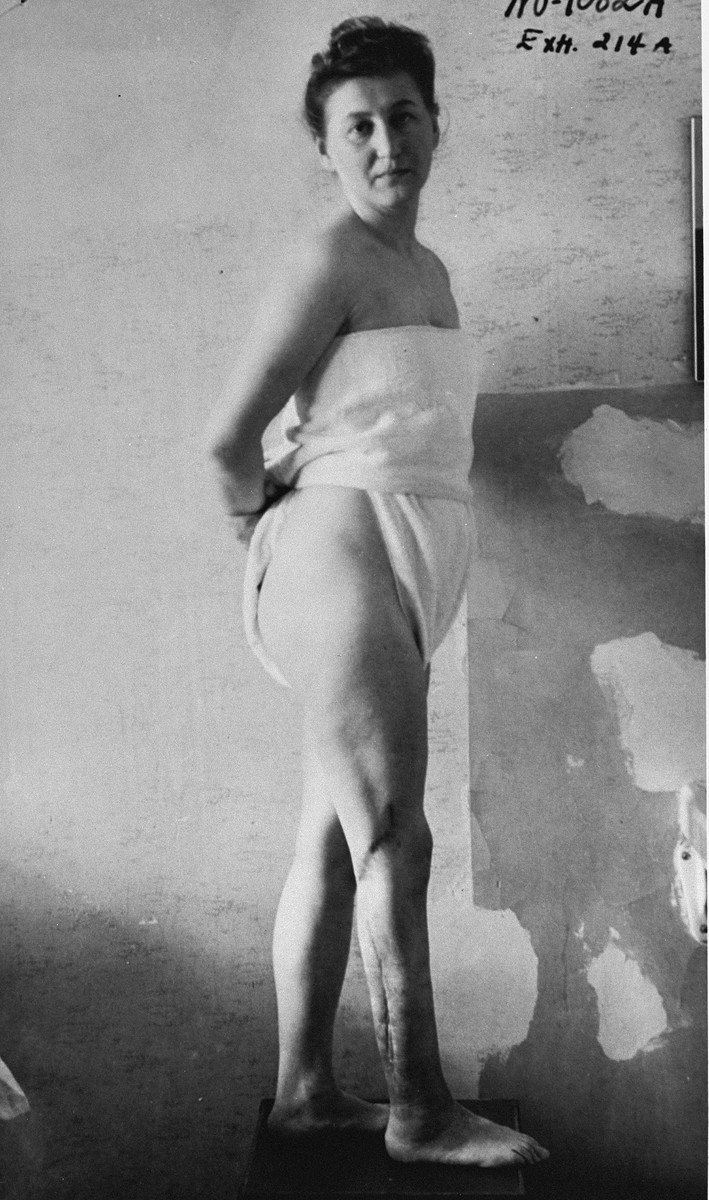
At Ravensbrück, the concentration camp for women, SS Dr. Karl Gebhardt, personal physician to Heinrich Himmler, focused on battlefield medicine. To test the efficacy of the new class of sulfanilamide drugs, he and his colleagues simulated the combat wounds suffered by German soldiers on the Eastern Front.
Their subjects were a group of young Polish women, mockingly referred to as Kaninchen, or “Rabbits.” Without anaesthesia, the women’s legs were cut open and the wounds deliberately infected with aggressive bacteria like streptococcus, gas gangrene, and tetanus. To better simulate a dirty wound, the doctors would stuff the incisions with soil, shards of glass, and wood shavings. After days of agony, as the infections raged and threatened to kill them, they would test their drugs. Others were subjected to bone-grafting experiments, their limbs broken and segments of bone removed to see if they would regenerate.
Many of the survivors were left permanently maimed, their bodies scarred by a ‘science’ that treated them as nothing more than laboratory animals.
These are but a few of the litany of horrors.
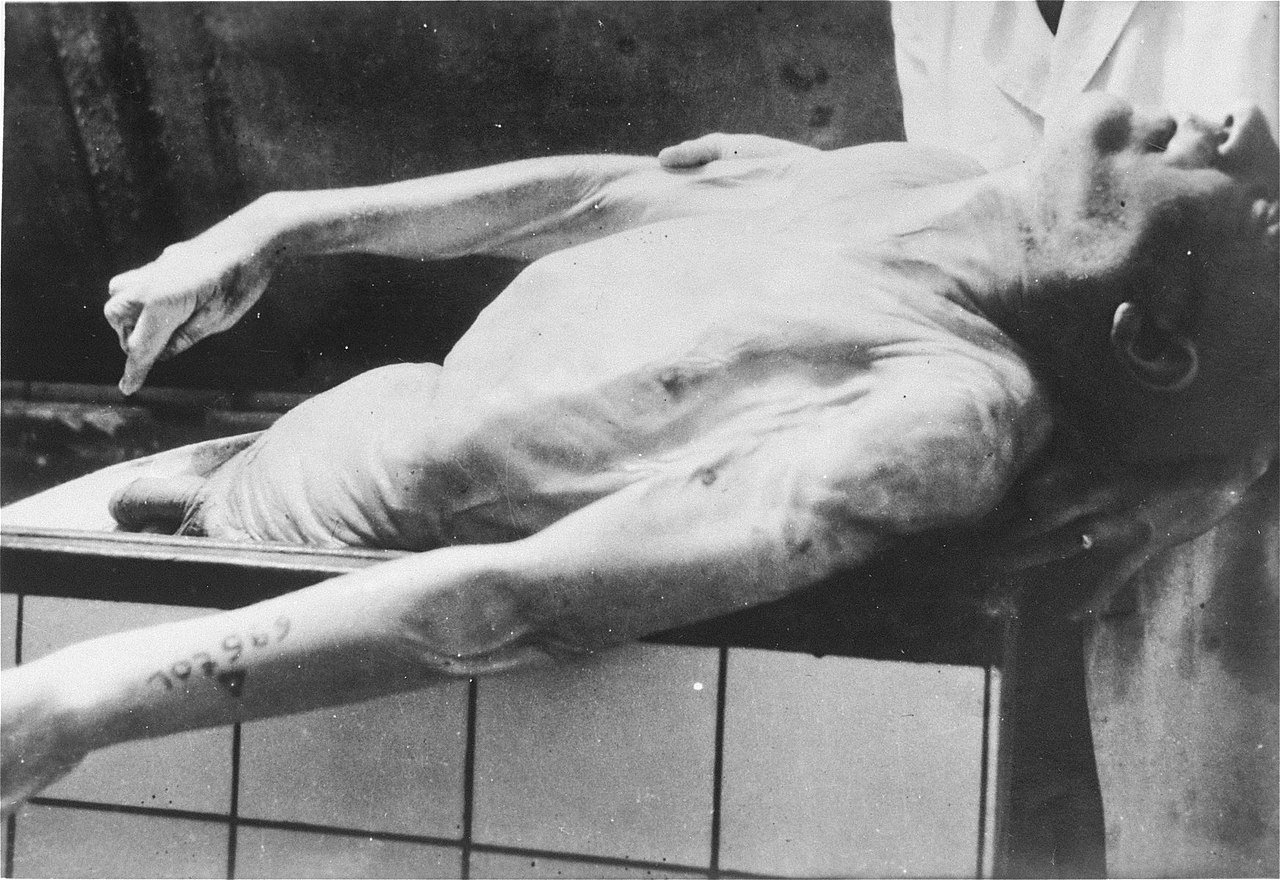
Elsewhere, doctors conducted seawater experiments to see if it could be made potable for sailors adrift at sea (it could not), typhus vaccine trials that involved infecting prisoners to cultivate the virus, and sterilisation experiments using X-rays, surgery, and caustic chemicals, all in the service of a regime that saw human life as a means to a malevolent end.
At Natzweiler-Struthof camp, prisoners were deliberately gassed with phosgene to test potential antidotes. Led by SS doctors like Otto Bickenbach, the research was driven by the fear that Allied forces would deploy the chemical weapon. While the goal was specific, the methodology was barbaric and the results were useless, providing no effective cure. The only ‘knowledge’ gained was a more precise understanding of the agonising way a human being is killed by phosgene—knowledge that serves no therapeutic purpose.
At Sachsenhausen, young Jewish boys were subject to sexually transmitted diseases in order to find ways to better treat the suffering of German soldiers in the occupied territories who in cavorting with the locals picked up more than a cold.
Some of the experimentation was less shocking – with prisoners at Dachau concentration camp subject to herbal remedies. The camp at that time hosted the largest medicinal garden in Europe, with a variety of plants, including gladioli, peppergrass, chili, blackcurrant, sage, and thyme.
The modus operandi in all of these experiments would, however, remain the same – prisoners and patients experimented on without their consent and in complete disregard for their overall health and wellbeing.
–

The Ethical Dilemmas
“The wrongs which we seek to condemn and punish have been so calculated, so malignant and so devastating, that civilization cannot tolerate their being ignored because it cannot survive their being repeated.”
Telford Taylor, Chief Counsel for the prosecution at the Nuremberg Doctors’ Trial (1947)
After the war, the full, sickening scope of these experiments was laid bare at the Nuremberg Doctors’ Trial.
More than 350 doctors would be brought to trial for their involvement in suspect practices and grotesque medical experimentation. Their defence was simple: that there was no international law to distinguish between legal and illegal human experimentation.
The world was confronted with an agonising question: what do we do with the data? Can knowledge born of such profound suffering ever be used? To discard it – if it were useful – would be to consign the victims’ agony to utter meaninglessness.
Yet to use it would feel like a posthumous victory for the Nazi doctors, a tacit acceptance of their methods.

This debate crystallised around the findings from the Dachau hypothermia experiments. For years, some corners of the scientific community argued that Rascher’s data, however tainted, was unique. No ethical modern study could ever replicate the conditions of freezing a human being to the point of death. Proponents argued that this data, which found its way into some textbooks and scientific papers, could save the lives of pilots, mountaineers, or anyone exposed to extreme cold.
However, a closer look revealed a devastating truth.
Not only was the research morally bankrupt, but it was also largely fraudulent and scientifically useless.
Dr. Robert Berger of Harvard Medical School published a comprehensive review in the New England Journal of Medicine in 1990, concluding that the Dachau data was riddled with inconsistencies, methodological flaws, and outright fabrication. Rascher’s understanding of physiology was rudimentary, and the poor health of the starving, brutalised prisoners meant their reactions to cold were simply not representative of healthy soldiers.
The consensus today is clear: the data is not only tainted, it is unreliable.
The debate itself during the post-war period, however, proved invaluable, forcing the medical world to create ethical firewalls to prevent such a thing from ever happening again.
The most important of these was the Nuremberg Code of 1947, a landmark document that for the first time enshrined the principle of “voluntary, informed consent” as the absolute bedrock of ethical human research.
Yet the ghosts of this era still haunt the halls of medicine in tangible ways, most notably in the form of a book: Pernkopf’s Topographic Anatomy of Man.

For generations of surgeons, this anatomical atlas has been considered a masterpiece. Its thousands of hand-drawn illustrations are unparalleled in their detail, colour, and precision, revealing the human body layer by meticulous layer.
For surgeons navigating the complex web of nerves in a delicate procedure, the atlas can be an indispensable tool, the difference between success and failure.
But the genius of the book is inextricably linked to its monstrous origin.
Its creator, Eduard Pernkopf, was an ardent and senior Nazi, the dean of the University of Vienna’s medical school. He worked tirelessly for two decades on his magnum opus, using a steady supply of corpses from the Third Reich.
A 1939 law dictated that the bodies of all executed prisoners be sent to the nearest anatomy department. Pernkopf’s institute was often so overwhelmed with bodies from the Vienna guillotine that executions had to be postponed.
At least half of the 800 images in the atlas are of these victims: Jews, political dissidents, Roma, gay men and lesbians. They are the uncredited models for Pernkopf’s work.
The early editions leave no doubt about the book’s ideological alignment; the signatures of the illustrators, Erich Lepier and Karl Endtresser, brazenly incorporate swastikas and the SS insignia.
Today, the atlas presents a profound “moral enigma,” as Holocaust survivor and health law professor Rabbi Joseph Polak describes it. To use the book is to benefit from the ultimate violation of human dignity. Dr. Jonathan Ives, a bioethicist, notes that “if we are using it and reaping the benefits it implies we are somehow complicit.” Yet, not to use it when a patient’s life or limb is at stake seems like an ethical failure of a different kind.
The uneasy consensus, guided by Jewish authorities like Rabbi Polak, is that the images may be used to save human lives, but only on the condition that their horrific history is fully acknowledged.
The story must be told, so that the victims are afforded, in death, some of the dignity they were so brutally denied in life.
The ethical taint of this era extends beyond physical objects like the Pernkopf Atlas and into the very language of science itself.
A powerful modern example is the ‘club cell,’ a critical cell type found in the small airways of the lungs. For decades, this was known as the ‘Clara cell,’ named after its discoverer in 1937, the Austrian anatomist Max Clara. However, a historical reckoning revealed that Clara was an ardent Nazi who used tissue from executed prisoners—the regime’s victims—to conduct the research that led to his discovery. Confronted with the fact that using the eponym was equivalent to honoring a scientist for work built on atrocity, the international respiratory science community took action. In 2013, after a consensus by the major medical journals, the name was officially changed to ‘club cell,’ a deliberate effort to strip Clara’s name from the annals of medicine. This linguistic shift serves as a potent reminder that the moral shadow of Nazi science is not merely a historical footnote, but an active ethical issue that modern medicine is still working to address.
–
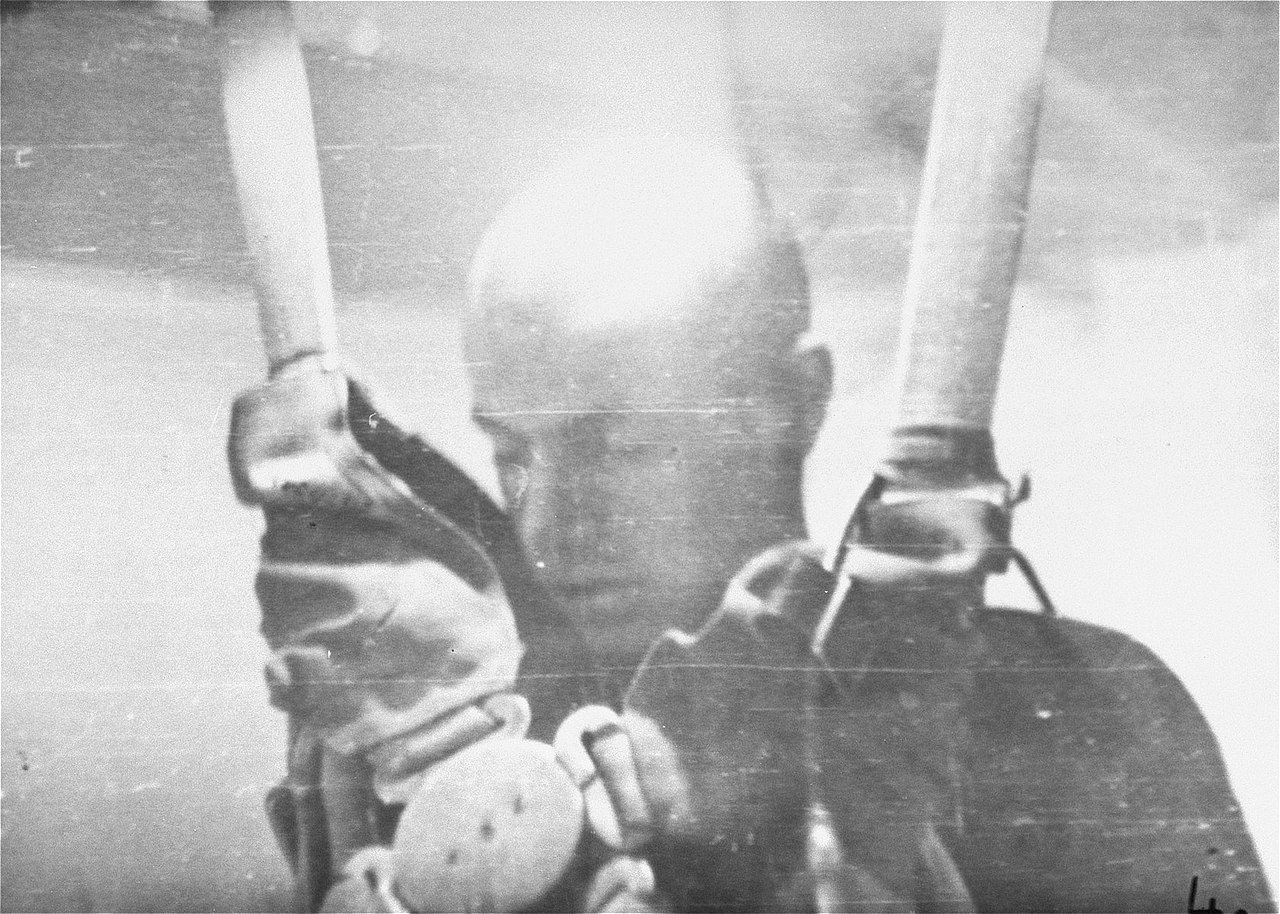
Conclusion
“The voluntary consent of the human subject is absolutely essential. This means that the person involved should have legal capacity to give consent; should be so situated as to be able to exercise free power of choice…”
The Nuremberg Code (1947)
So, were the Nazi medical experiments useful?
The answer must be an unequivocal and resounding no – with the exception of the Pernkof Atlas.
Scientifically, these experiments were an abyss. The vast majority of the research was pseudoscientific nonsense driven by racial hatred; those experiments with a semblance of a logical goal, like the Dachau studies, were so poorly executed and riddled with fraud as to be scientifically worthless.
And yet, the findings from this period – like the work displayed in the Pernkopf book – are still used daily.
The paradox is that the real usefulness of the Nazi experiments lies not in their findings, but in their failure.
Their legacy is not a collection of data, but a collection of warnings. The revulsion and shame they provoked in the post-war world forced civilization to build the ethical guardrails that protect us to this day. The Nuremberg Code, the subsequent Declaration of Helsinki, the Institutional Review Boards that now govern all human research—these are the true outcomes of Dachau and Auschwitz. They are the antibodies the world developed in response to that sickness of the soul.
The experiments serve as an eternal lesson in how easily the pursuit of knowledge can become unmoored from humanity, how the language of healing can be twisted into a justification for murder. The ghosts of the victims live on, not in the footnotes of flawed scientific papers, but in the heart of every ethical code that demands consent, respects dignity, and affirms that the pursuit of any goal, no matter how seemingly noble, can never justify the violation of a single human life.
***
If you’ve enjoyed reading this article, consider booking one of our private guided tours of Berlin.
HISTORICAL ARTICLES
Mythbusting Berlin

Are There Any Nazi Statues Left In Berlin? – Mythbusting Berlin
Visitors to Berlin often arrive expecting to find the physical remnants of the tyranny of the 20th century still standing – statues of dictators, triumphal arches, or bronze idols. Instead, they often find none. The stone symbols and statues of the Third Reich are still gazing down on them, however, hiding in plain sight. But why are there no statues of Hitler? Did the Allies destroy them all in 1945, or is the truth stranger
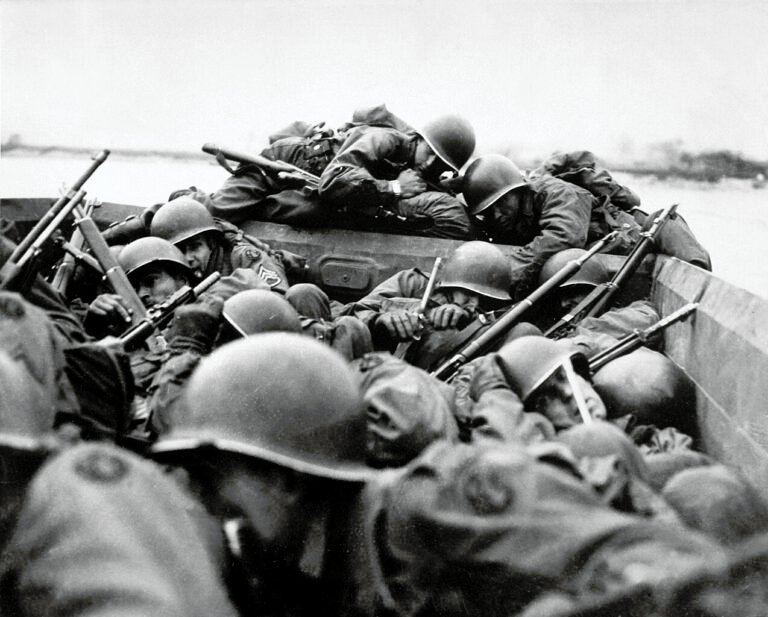
Could The Western Allies Have Captured Berlin? – Mythbusting Berlin
To contemplate a Western Allied capture of Berlin in 1945 is to challenge the established endgame of the Second World War. What was the true military and logistical feasibility of a Western Allied assault on the Nazi capital? What factors truly sealed Berlin’s fate, and what might have changed had the Allies pushed eastward?
Answering these questions means delving into the complex interplay of logistics, political maneuvering, and the competing visions for a post-war world
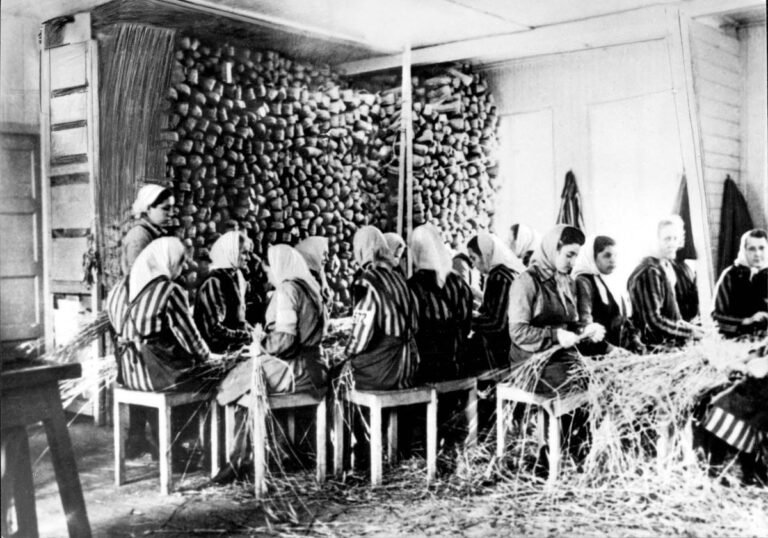
Did Any Of The Rothschild Dynasty Die In The Holocaust? – Mythbusting Berlin
The Rothschild name is synonymous with immense wealth, influence, and persistent conspiracy theories—especially during the era of Nazi Germany. Often targeted by antisemitic propaganda, the family’s survival during World War II has sparked myths about their supposed immunity from Nazi persecution. But did any Rothschild family member actually perish in the Holocaust? This article explores that compelling question, unraveling historical misconceptions and revealing the reality behind one of Europe’s most famous dynasties.
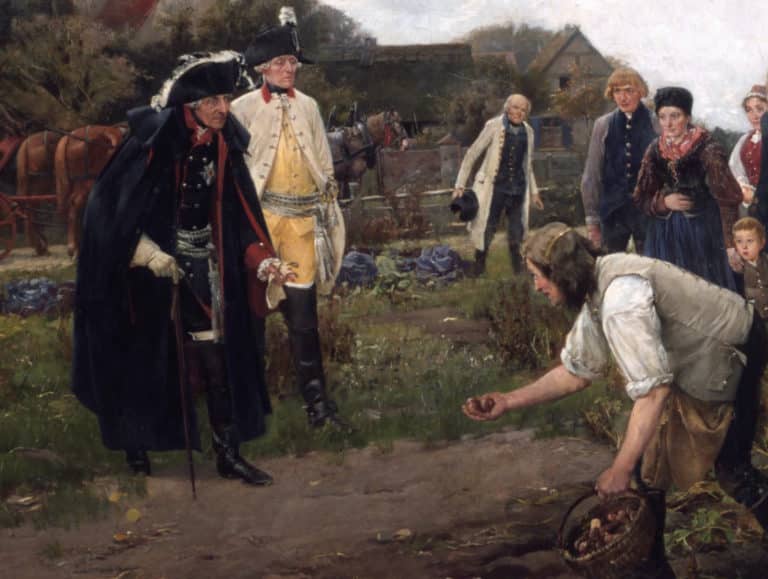
Did Frederick The Great Introduce The Potato To Germany? – Mythbusting Berlin
One of the more bizarre claims to fame attributed to the first King of Prussia is that the man who would go down in history known as Frederick the Great introduced the potato to Germany during his reign back in the 1700s. This starchy root vegetable has undoubtedly become a staple part of German cuisine – an essential addition to any plate of Schnitzel, Schweinshaxn, and Königsberger Klopse – however, whether Frederick the Great is
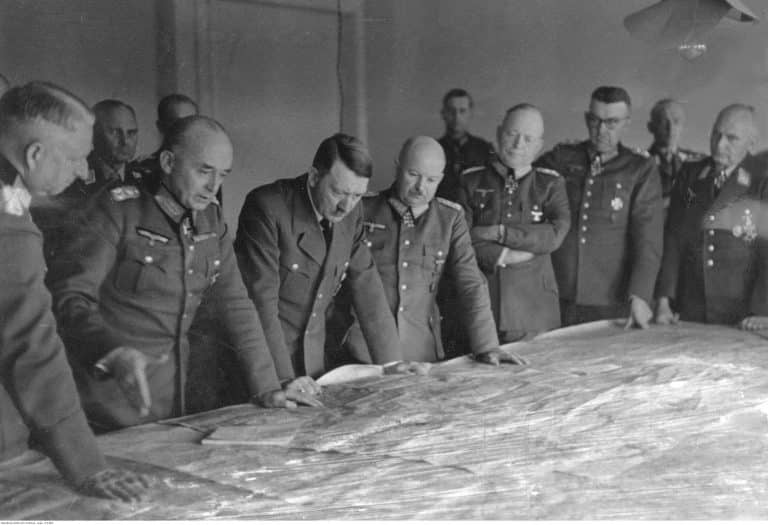
Did Hitler Escape To Argentina In 1945? – Mythbusting Berlin
Although Nazi leader, Adolf Hitler, certainly remains an inescapable figure, could there be any truth to the story of his escape to Argentina in 1945? That the most wanted man on earth could simply vanish, to spend the rest of his life peacefully in South American obscurity captivates imaginations. Yet, despite numerous investigations, this tale persists primarily as myth—fueled by speculation, hearsay, and conspiracy theories.
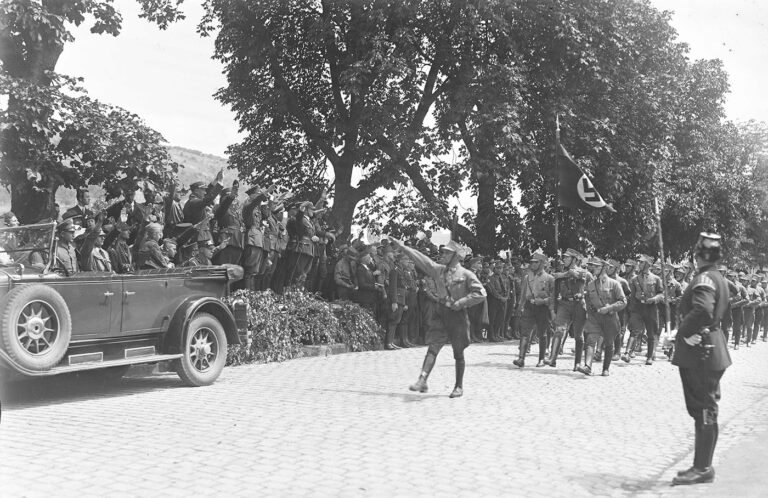
Did Hugo Boss Design The Nazi Uniforms? – Mythbusting Berlin
The idea that Hugo Boss – the man whose name now adorns expensive suits and fragrances – was the creative genius behind the Nazi uniforms suggests a terrifying collision of haute couture and holocaust – a marriage of high style and high crimes. The image is striking: a German tailor sketching the ultimate villain’s costume. But history, as usual, is far messier, more bureaucratic, and more banal than the internet memes suggest. To understand who
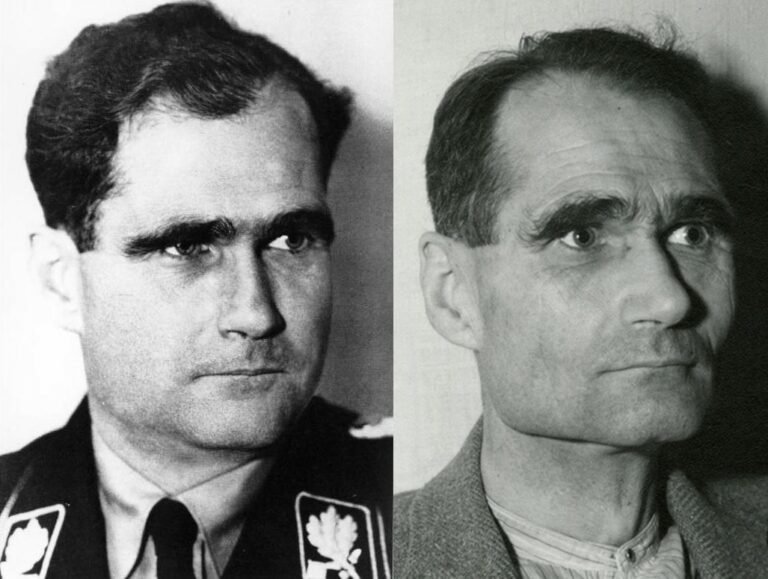
Did Rudolf Hess Really Commit Suicide? – Mythbusting Berlin
On a summer’s day in 1987, the last Nazi war criminal of the Nuremberg trials was found dead in a prison built for hundreds, yet for two decades, housed only him. The official verdict was suicide, a straightforward end to a life defined by fanaticism, delusion, and contradiction.
But the simplicity of the report belied the complexity of the man and the 46 years he had spent in Allied custody. In the meticulously controlled
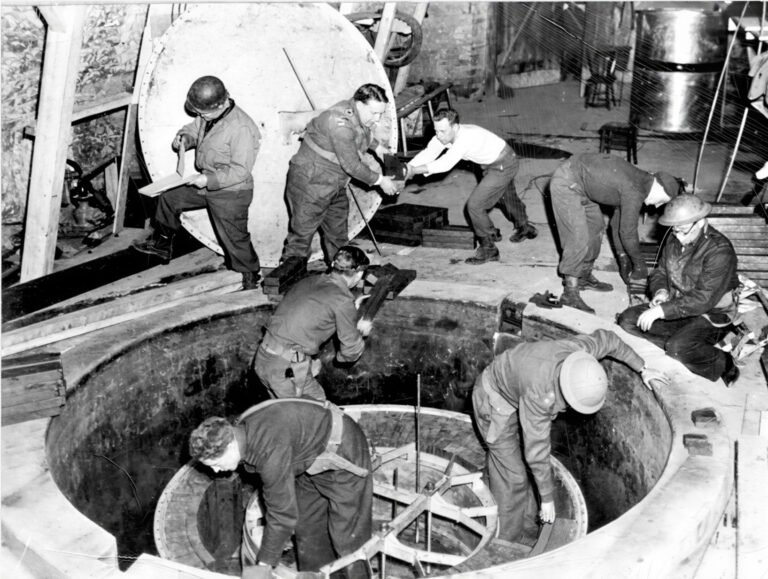
Did The Nazis Develop Nuclear Weapons? – Mythbusting Berlin
The Nazi obsession with super-weapons became so serious in the closing stages of the Second World that Adolf Hitler personally believed that such ‘Wunderwaffen’ both existed in a usable form – and would save the country from defeat. Had the Nazis managed to develop nuclear weapons by 1945 – the outcome of the war would surely have been different. But how close were Hitler, Himmler, and his henchmen to developing an A-bomb?

Did The Nazis Invent Decaf Coffee? – Mythbusting Berlin
Persistent rumors claim that Nazis preferred their coffee anything but pure, leading some to wonder if they might have influenced the development of decaffeinated coffee. Although decaf was already widely available across Europe by the mid-20th century, speculation continues: could the Nazis really have played a role in popularizing—or even discovering—this caffeine-free alternative, or is this simply another caffeinated conspiracy cooked up to sensationalize an ordinary historical detail?

Did The Nazis Invent The Bicycle Reflector? – Mythbusting Berlin
The fruits of wartime ingenuity are plenty – so many, in-fact, that it has become somewhat of a worn cliche that as the guns start firing the innovators get to work, often solving problems while providing more problems for the enemy to overcome.The kind of progress that results in the production of newer improved, more lethal weapons, such as to increase the chances of victory.
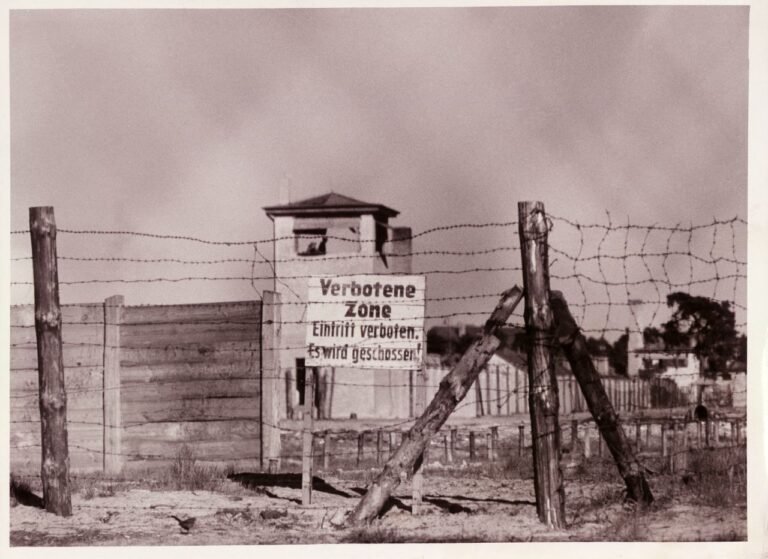
Did The Nazis Run The Largest Counterfeiting Operation In History? – Mythbusting Berlin
During the Second World War the Nazis masterminded an astonishing plot to destabilise Britain by flooding its economy with counterfeit banknotes. Crafted in secret by concentration camp prisoners, this forged fortune became the most ambitious counterfeiting operation ever attempted. But was it history’s largest? Dive into the extraordinary tale of Operation Bernhard,
rife with deception, survival, and intrigue—revealing the truth behind one of the Third Reich’s most audacious schemes and its surprising legacy.
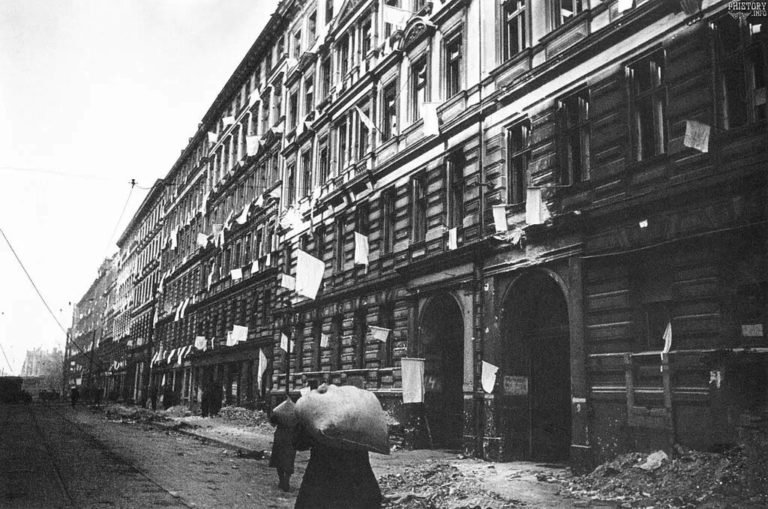
Did The Second World War End In Berlin? – Mythbusting Berlin
When is a war ever truly over? When the last shot is fired in anger would seem like the best measure. Rarely, though, is it possible to gain insight into such a moment.
Remarkably, a record still exists of such a moment at the end of the First World War on the Western Front. A seismic register and recording of the last belching battery of British guns firing artillery across no-man’s-land, followed by a profound
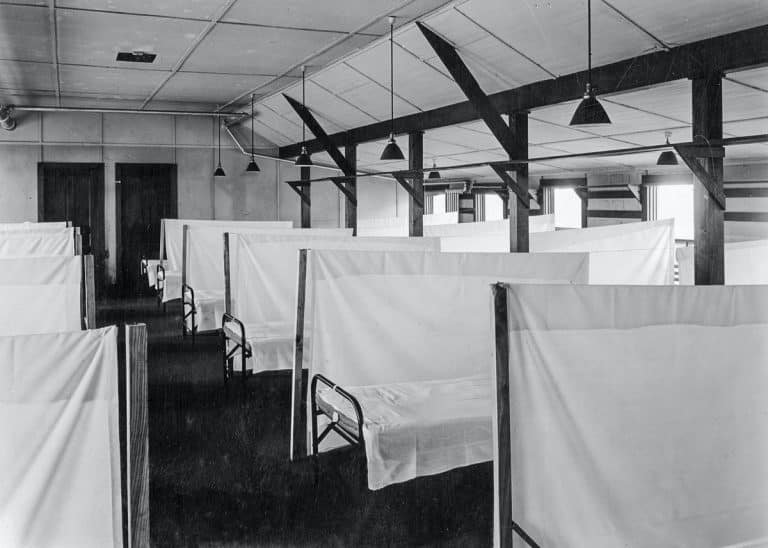
Did The Spanish Flu Pandemic Help The Nazis Take Power? – Mythbusting Berlin
The devastating Spanish Flu pandemic of 1918-1919 struck amid Germany’s post-war turmoil, compounding social instability, economic hardship, and widespread political disillusionment. Could this catastrophic health crisis have indirectly paved the way for Nazi ascension? While often overshadowed by war and revolution, the pandemic’s profound psychological and societal impacts arguably contributed to the perfect storm, enabling extremist ideologies—including Nazism—to gain popularity and ultimately seize power in a fractured Germany.
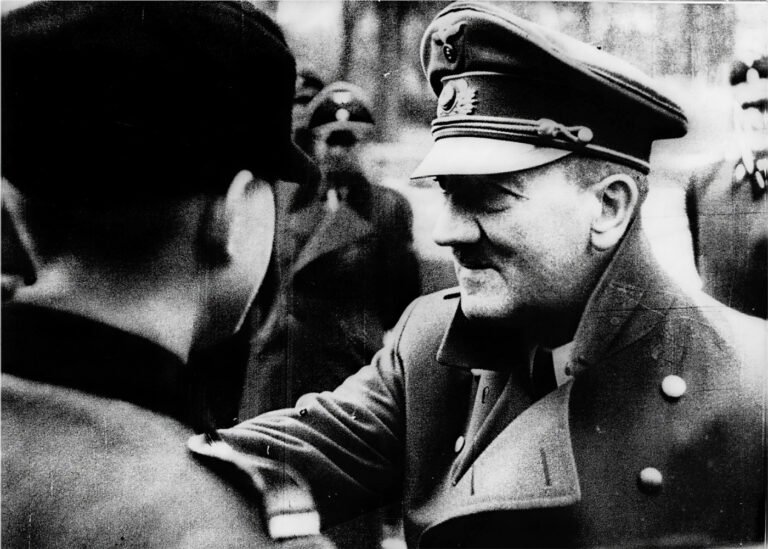
Have Adolf Hitler’s Remains Been DNA Tested? – Mythbusting Berlin
In the smouldering ruins of Berlin in 1945, the world’s most wanted man vanished. Did Adolf Hitler, as official history attests, die by his own hand in the Führerbunker? Or did he escape, fuelling a thousand conspiracy theories that have echoed for decades? For years, the Soviets claimed to hold the gruesome proof of his death: a skull fragment and a set of teeth, locked away in Moscow archives. But in an age of definitive
How Did The Nazi Concentration Camps Differ From The Soviet GULAG?
The Nazi concentration camps and Soviet Gulag system have often been conflated in popular imagination—twin symbols of twentieth-century totalitarian horror. Yet the two systems operated on fundamentally different principles. One extracted labor to fuel industrialisation while accepting mass death as collateral damage; the other evolved into purpose-built machinery of genocide. Understanding these distinctions isn’t merely academic—it reveals how different ideologies produce different atrocities, and why Germany and Russia reckon with these legacies so differently today.

How Long Did It Take To Build The Berlin Wall? – Mythbusting Berlin
It is one of the most enduring images of the 20th century: a city divided overnight. The popular narrative tells us that Berliners went to sleep in a unified city and woke up in a prison. While the shock of August 13th 1961, was very real, the idea that the ‘Wall’ appeared instantly is a historical illusion. The physical scar that bisected Berlin was not a static creation, but a living, malevolent beast that evolved

How Many Assassination Attempts On Adolf Hitler Were There? – Mythbusting Berlin
Nazi leader, Adolf Hitler, projected an aura of invincibility, a man of destiny shielded by providence. But behind the carefully constructed image of the untouchable Führer lies a story of constant threat, of bombs that failed to detonate, and errant bullets that missed their mark. Unearth the hidden history of the numerous attempts on Hitler’s life as we explore the courage of those who tried to change the course of history and the devil’s luck
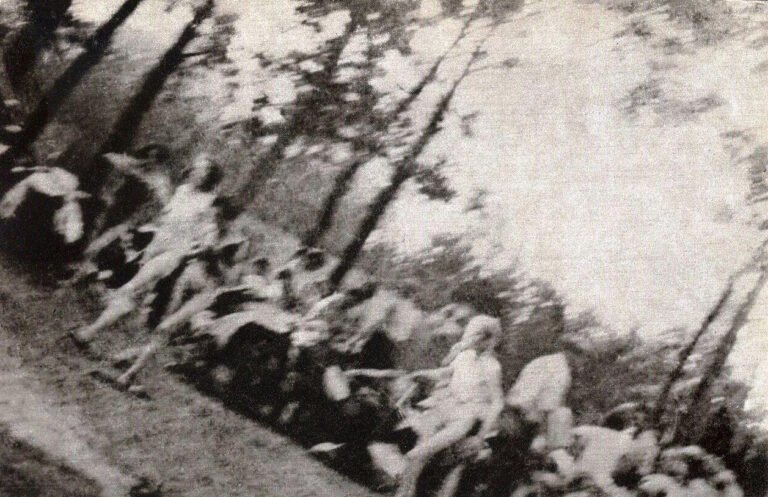
How Many Jews Died In The Holocaust? – Mythbusting Berlin
The answer to the question posed of how many Jews died in the Holocaust is a simple one: too many. That merely one death was an unforgivable obscenity is a fundamental and necessary realisation in understanding the capriciousness of this unparalleled racial genocide. To comprehend, however, the full number of Jews murdered in Europe by the Nazi regime in the 1930s and 1940s is a detective story of epic proportions: the evidence overwhelming, multifaceted, and
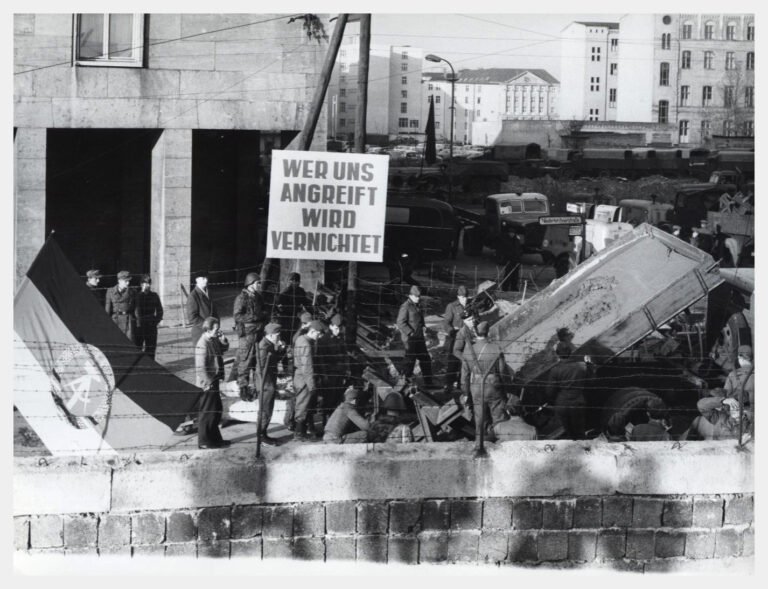
How Many People Died Trying To Escape East Germany? – Mythbusting Berlin
The image of the Berlin Wall is seared into our collective memory, a concrete symbol of Cold War oppression. We think of the daring escapes and the tragic deaths of those who failed. But that well-known number is only a fraction of the truth. The story of those who died trying to escape East Germany is far broader and more complex than most imagine, stretching along a thousand-kilometer border and out into the cold waters
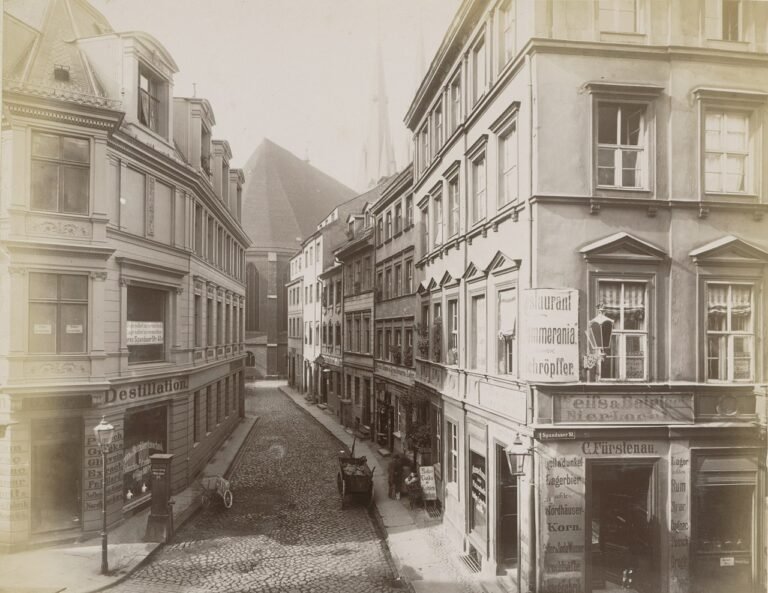
How Old Is Berlin? – Mythbusting Berlin
A relatively new arrival in Europe, Berlin is over 1000 years younger than London, nevermind Rome or Athens, Jerusalem or Jericho. Just how old is Berlin though?
A question fraught with false assumptions and distortions – that has more often than not been answered with propaganda as it has with the cold hard truth.









